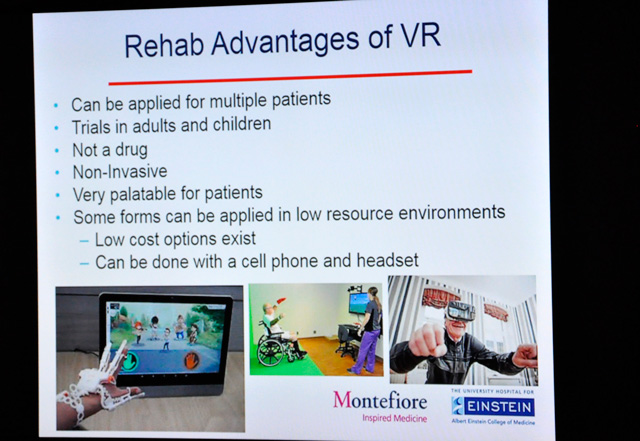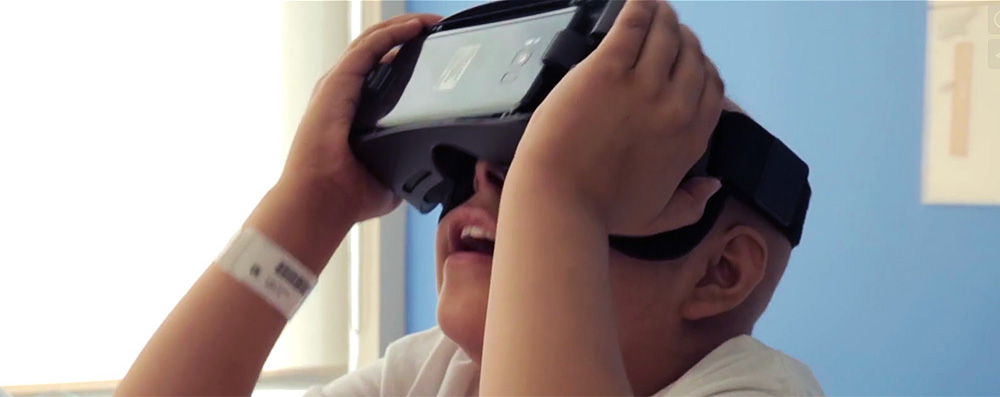By Jovanni Lezama
Doctors at Montefiore Medical Center are using virtual reality to reduce trauma in young patients, such as those suffering from cerebral palsy. Patients with headsets can explore virtual worlds in sights and sounds. By engaging the minds of the patients, doctors can distract them from pain or stress. “Imagine how hard is it to give one shot to a kid as opposed to 20 with someone with cerebral palsy,” said Dr. Matthew N. Bartels, chairman of the Department of Rehabilitation Medicine at Montefiore Medical Center. The VR helps the child feel at ease, he says.
Bartel presented the hospital’s work at a panel, “Crossroads of Opportunity: Virtual Reality, Media Art, and Medicine Today,” at the Graduate Center, CUNY. Montefiore is in a partnership with ChilZone, a children’s innovation lab that incorporates virtual reality, augmented reality and 3-D printing into treatment. Bartels says these technologies help patients cope with some very scary concepts.

Acute pain is something that can be dealt with by using VR, he says. Acute pain is a type of pain that typically lasts less than three to six months or pain that is directly related to soft tissue damage such as a sprained ankle or a paper cut. “Pain is a psychological symptom,” said. Bartels.
While this technology is not a cure, it can minimize the need for pharmaceuticals. If a patient is going through chemotherapy, said Bartels, VR can make the experience less painful and require less medication for nausea and dizziness. Depression can increase pain and impact the healing process. “You need to heal the whole body, and the VR will help the emotional aspect,” said Bartels.
Bartels said the physicians are taking possible addiction to the technologies into consideration. “We know that there’s a release of dopamine and that also causes a potential to keep wanting to go back in,” he said. According to a study by researcher Douglas Gentile of Iowa State University about “8.5 percent of American youths ages 8 to 18 who play video games show multiple signs of behavioral addiction.”
While addiction to virtual reality is a concern, doctors still believe it is a non-evasive alternative to drugs. For now, the technology is only available for children with cerebral palsy. One requirement is the ability to interact, track and follow VR, which some children are not capable of doing. Those who are able to interact, do quite well according to Bartels. However the children weren’t able to tolerate the more powerful Oculus Rift, the latest virtual reality headset on the market which has more features than less expensive models like Google Cardboard. “With the cardboards, we never had a child take them off,” said Bartels. “I think because it is less intense as opposed to the Oculus Rift.” Some children will only cooperate if they have VR set up first because they enjoy using it.

VR technology is still in its early stages. “VR now is where cellphones were in 1985, it is not as smooth as an iPhone 10,” said Bartels. Paying for development of technologies is a challenge he said, adding that philanthropy would be a better way to fund it than relying on patient’s families. Bartels says he hopes that some day “We can reach a utopia like Ready Player One,” a movie set in 2045 where people use VR to escape a grim real world.








No comments